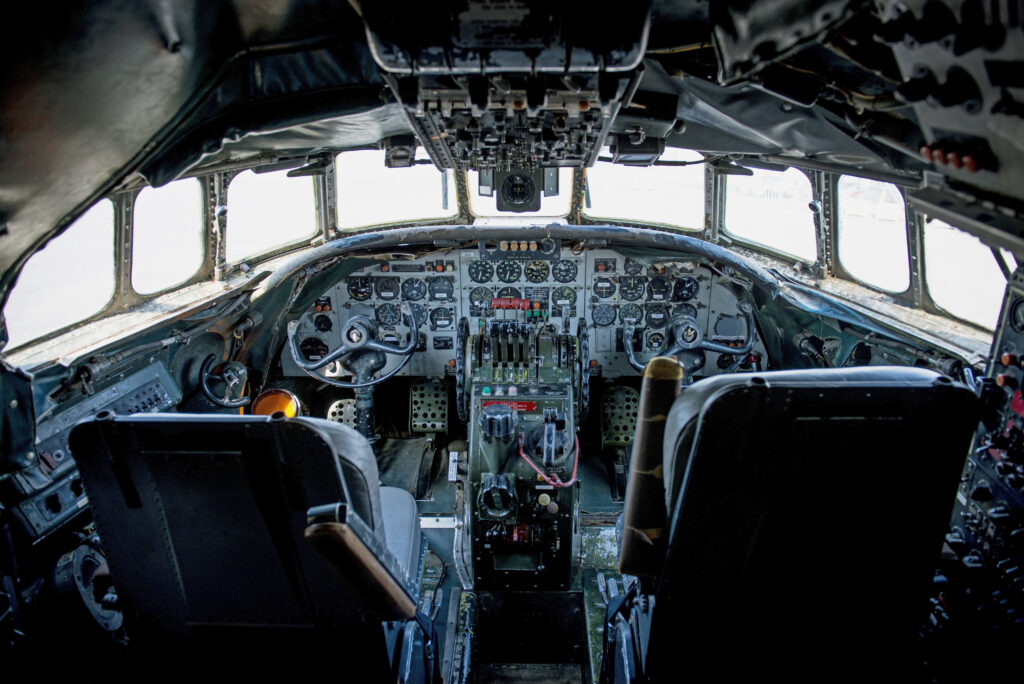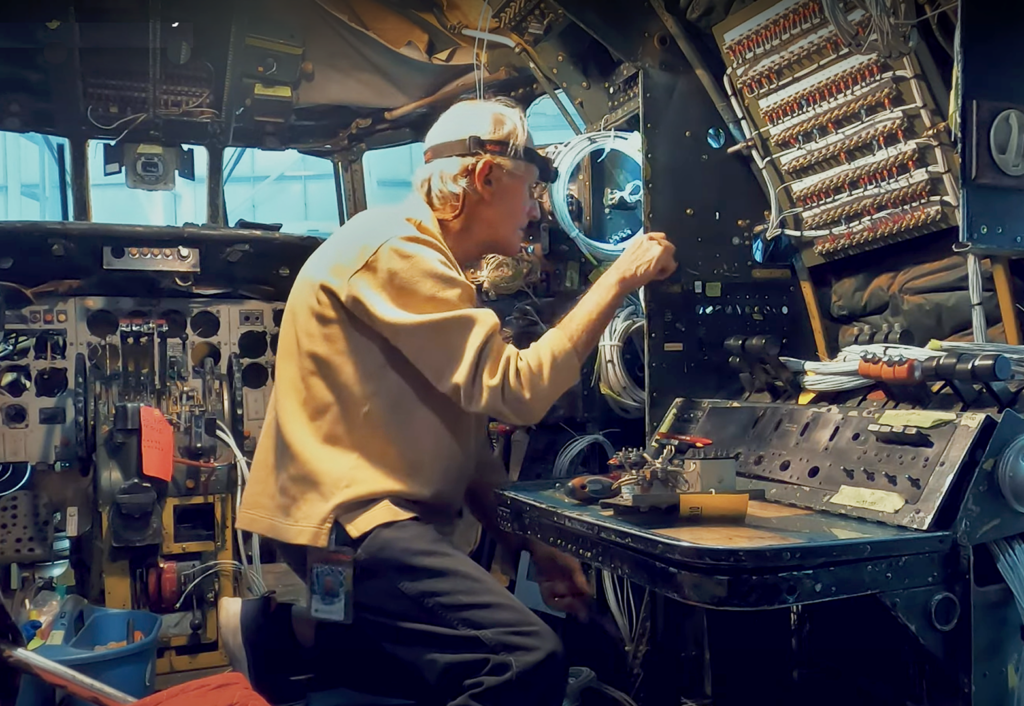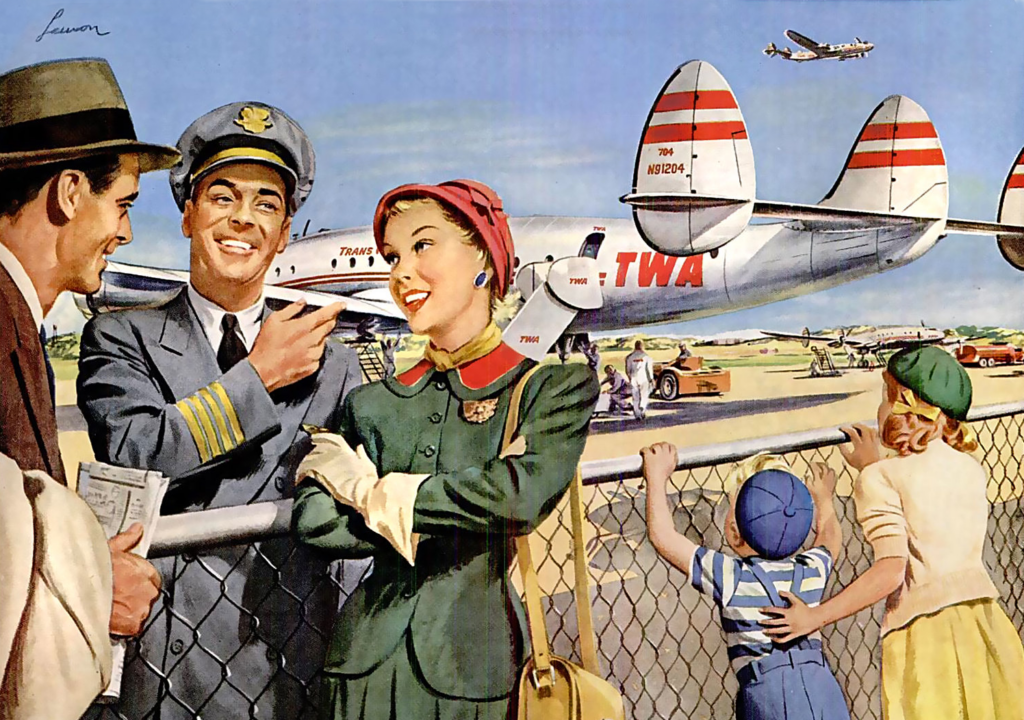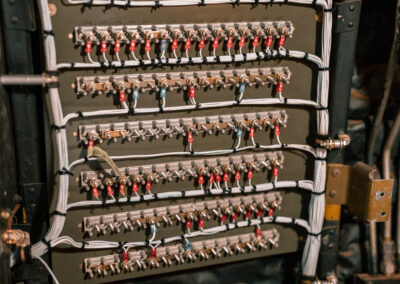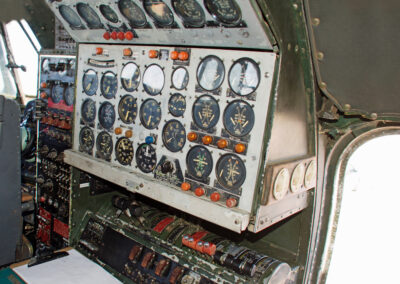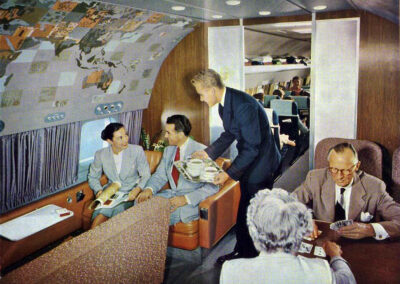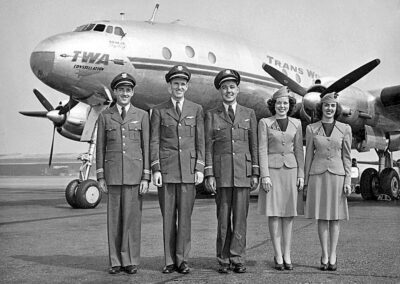From the Flight Deck
August 15, 2022
First Air Force One’s flight deck will be a unique combination of period-correct equipment combined with the best and most modern flight safety, navigation, and cockpit equipment available. The Dynamic Aviation team is combing every inch of the flight deck, refurbishing, replacing, and upgrading. She will be a spectacular plane to fly in when she is ready for service once again.
When it was first introduced, the Lockheed Constellation combined the performance of a WWII fighter with the elegance and superiority of a luxury liner. In 1939, aviation pioneer Howard Hughes held a majority stake in Trans World Airlines (TWA). In order to compete with rival airlines, he was looking for a truly extraordinary aircraft design that would change the face of air travel. As one of the most influential and wealthy people in the world, he spent most of the 1930s and 1940s setting world air speed records and building the Hughes H-1 Racer and H-4 Hercules. His vision for a state-of-the-art commercial aircraft would encompass all the high-performance aspects of these designs. This would be the genesis of the Constellation.
Hughes negotiated with Lockheed to ensure that no other airline would be allowed to purchase the new design until TWA had taken delivery of 35 aircraft. This decision eventually propelled TWA into a lead position in world travel and put Lockheed – a nominal player in the aviation market – on the map as a major presence in aerospace.
The Constellation had hydraulically-boosted flight controls (aviation’s equivalent of power steering), an innovation not previously seen on passenger planes. The Connie was faster than most WWII fighter aircraft and the pressurized cabin allowed it to fly above bad weather. Hughes’ design also required capacity for 40 passengers and a range of 3,500 miles so that it could function as a transcontinental airliner, specifications much greater than any other aircraft on the market. It was also one of the first civilian aircraft to be outfitted with radar.
The Super Constellation, unveiled in 1951, boasted unheard-of refinements such as air conditioning, reclining seats, and extra lavatories. It was a plane ahead of its time and was at least twice as fuel efficient as the industry’s first jets. All of this required ‘next-generation’ technology in the cockpit, and the world’s most distinguished pilots to command that technology. A four-engine, propellor-driven aircraft with cutting-edge systems requires unrelenting attention to detail in order to fly safely.
The Wright R-3350 Duplex-Cyclone radial engine, used in the first-generation Constellations, was rushed through development to propel the B-29 Superfortress, which would eventually bring an end to WWII. The engines were notorious for bursting into flames unexpectedly. Although further developments had occurred to minimize the risk by the time the civilian Constellation went into service, every officer on board knew the inherent risks of these high-performance engines, and the constant monitoring to keep them running as they should.
Massachusetts native Bob Trumpolt had a 27-year flying career with TWA as a Flight Engineer. “I was so fortunate and honored to have served my great airline,” he recalls. “The passengers were so nice – dad in a three-piece suit, mother with a little hat and white gloves, children scrubbed and dressed in their Sunday best. The cockpit door was unlocked, and a flight attendant might bring a nervous businessman or a wide-eyed child up front for a visit. The captain would tailor his chat to each, sending the businessman back looking much happier having seen “up-front” and of course the youngster enthralled with all the noise, lights, dials and excitement in the wheelhouse.”
Your investment in this project will allow us to leave a legacy to future generations of dignity, freedom, and peace through America’s role in today’s world.

